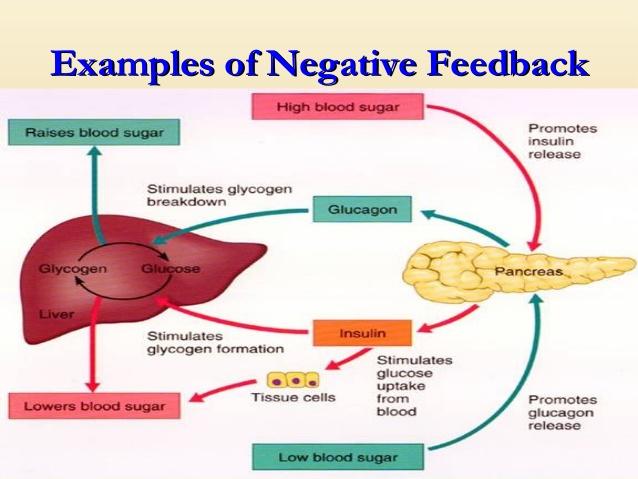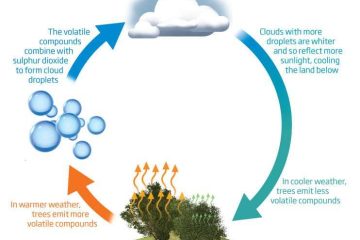In the intricate dance of nature, where ecosystems harmonize and evolve, the Gaia Hypothesis emerges as a captivating theory that delves into the interconnected web of life on Earth. At its core lies the concept of negative feedback, a subtle yet powerful force shaping our planet’s delicate balance. Join us on a journey through the realms of ecology and science as we unravel the mysteries behind how Gaia herself employs negative feedback mechanisms to maintain equilibrium in a world teeming with complexity and wonder.
Table of Contents
- Understanding the Gaia Hypothesis: A Balancing Act in Nature
- Negative Feedback Mechanisms in the Gaia Hypothesis Unveiled
- The Role of Negative Feedback in Gaia Hypothesis: A Natural Harmony Perspective
- Optimizing Ecosystem Health with Negative Feedback Systems: Gaia Hypothesis Revisited
- Q&A
- Closing Remarks

Understanding the Gaia Hypothesis: A Balancing Act in Nature
Through the lens of the Gaia Hypothesis, the interconnectedness of Earth’s systems becomes apparent, showcasing a delicate balance that mirrors negative feedback mechanisms found in nature. This theory proposes that the Earth acts as a self-regulating organism, maintaining optimal conditions for life through a series of intricate processes.
One key aspect of the Gaia Hypothesis is the concept of reciprocity between living organisms and their environment. As species interact with their surroundings, they influence and are influenced by various factors, creating a dynamic equilibrium. This intricate dance of give and take highlights the symbiotic relationship between life forms and the planet, emphasizing the importance of harmonious coexistence for the planet’s well-being.

Negative Feedback Mechanisms in the Gaia Hypothesis Unveiled
In the intricate web of ecological balance, the Gaia Hypothesis stands as a testament to the interconnectedness of all living organisms on our planet. At its core, this hypothesis proposes that Earth’s biosphere and physical components operate together as a self-regulating system, akin to a living organism. Through a series of intricate negative feedback mechanisms, Gaia maintains equilibrium, ensuring the sustainability of life forms across diverse ecosystems.
One fascinating example of negative feedback within the Gaia framework lies in the regulation of atmospheric gases. As plants absorb carbon dioxide through photosynthesis, they help control its levels in the atmosphere, thus preventing excessive heat retention. Similarly, oceanic phytoplankton play a crucial role by producing oxygen and absorbing carbon dioxide, maintaining a delicate balance conducive to sustaining life on Earth. These intricate feedback loops showcase the harmonious dance of interdependence within Gaia, highlighting nature’s innate ability to self-regulate and thrive.
The Role of Negative Feedback in Gaia Hypothesis: A Natural Harmony Perspective
Negative feedback plays a crucial role in the intricate balance of the Gaia Hypothesis, highlighting nature’s innate ability to self-regulate and maintain harmony. One key aspect of this concept is how ecosystems can adjust and stabilize themselves through feedback mechanisms, ensuring sustainability and resilience over time. By understanding the cyclical nature of negative feedback within the context of Gaia, we gain insight into the interconnectedness of all living organisms and their environment.
In the realm of the Gaia Hypothesis, negative feedback acts as a subtle yet powerful force that guides the delicate dance of life on Earth. Through processes such as temperature regulation, nutrient cycles, and predator-prey dynamics, nature showcases its remarkable capacity to correct imbalances and promote equilibrium. This intricate web of interactions underscores the wisdom of nature, emphasizing the importance of respecting and preserving the delicate feedback loops that sustain our planet’s vitality and diversity.
Optimizing Ecosystem Health with Negative Feedback Systems: Gaia Hypothesis Revisited
Negative feedback systems play a crucial role in maintaining the delicate balance of our planet’s ecosystems. The Gaia hypothesis proposes that the Earth functions as a self-regulating system, akin to an organism, where various components work in harmony to sustain life. This concept challenges traditional views of Earth as a passive environment, highlighting the interconnectedness and interdependence of all living and non-living entities.
In a negative feedback loop, changes in one part of the system trigger responses that counteract the initial change, helping to stabilize and restore equilibrium. The Gaia hypothesis embodies this principle, illustrating how natural processes like the carbon cycle, ocean currents, and atmospheric compositions interact to create a feedback mechanism that supports life. By understanding and harnessing these negative feedback systems, we can learn valuable lessons about sustainability and the intricate web of life on our planet.
Q&A
Q: Is the Gaia Hypothesis an Example of Negative Feedback in the Environment?
Q: What is the Gaia Hypothesis in relation to negative feedback?
A: The Gaia Hypothesis proposes that the Earth functions as a self-regulating system where living organisms and their inorganic surroundings co-evolve. Negative feedback mechanisms play a crucial role in maintaining stability within this system.
Q: How does the Gaia Hypothesis demonstrate negative feedback?
A: Negative feedback in the context of the Gaia Hypothesis refers to processes that counteract changes and help maintain equilibrium in the Earth’s environment. For example, when CO2 levels rise due to human activities, plants and oceans act as negative feedback mechanisms by absorbing excess CO2, mitigating the impact of climate change.
Q: Can you provide an illustration of negative feedback according to the Gaia Hypothesis?
A: One illustrative example of negative feedback in the Gaia Hypothesis is the regulation of temperature through the carbon cycle. As temperatures increase, biological processes like photosynthesis absorb more CO2, reducing the greenhouse effect and stabilizing the Earth’s temperature.
Q: How does understanding negative feedback in the Gaia Hypothesis benefit environmental conservation efforts?
A: Recognizing the role of negative feedback in the Gaia Hypothesis can help scientists and policymakers design more effective strategies for environmental conservation. By mimicking natural feedback mechanisms, such as promoting plant growth to sequester carbon, we can work towards restoring balance in the Earth’s ecosystems.
Q: In summary, why is the concept of negative feedback crucial in the context of the Gaia Hypothesis?
A: Negative feedback mechanisms highlighted by the Gaia Hypothesis emphasize the interconnectedness of life on Earth and the importance of maintaining balance for sustainability. Understanding and harnessing these natural processes can guide us towards a more harmonious relationship with our planet.
Closing Remarks
As we conclude our exploration of the Gaia hypothesis as an example of negative feedback, we are reminded of the intricate balance that exists within our planet’s ecosystems. Just as Gaia theorizes that Earth acts as a self-regulating organism, we too play a role in maintaining harmony with our environment. Let us continue to ponder the interconnectedness of all life on Earth and strive to coexist in a symbiotic relationship with our planet. By understanding and respecting the delicate feedback mechanisms at play, we can work towards a more sustainable and thriving world for generations to come. Thank you for delving into this thought-provoking concept with us. Embrace the interconnectedness, and may we all evolve together towards a brighter future.



0 Comments